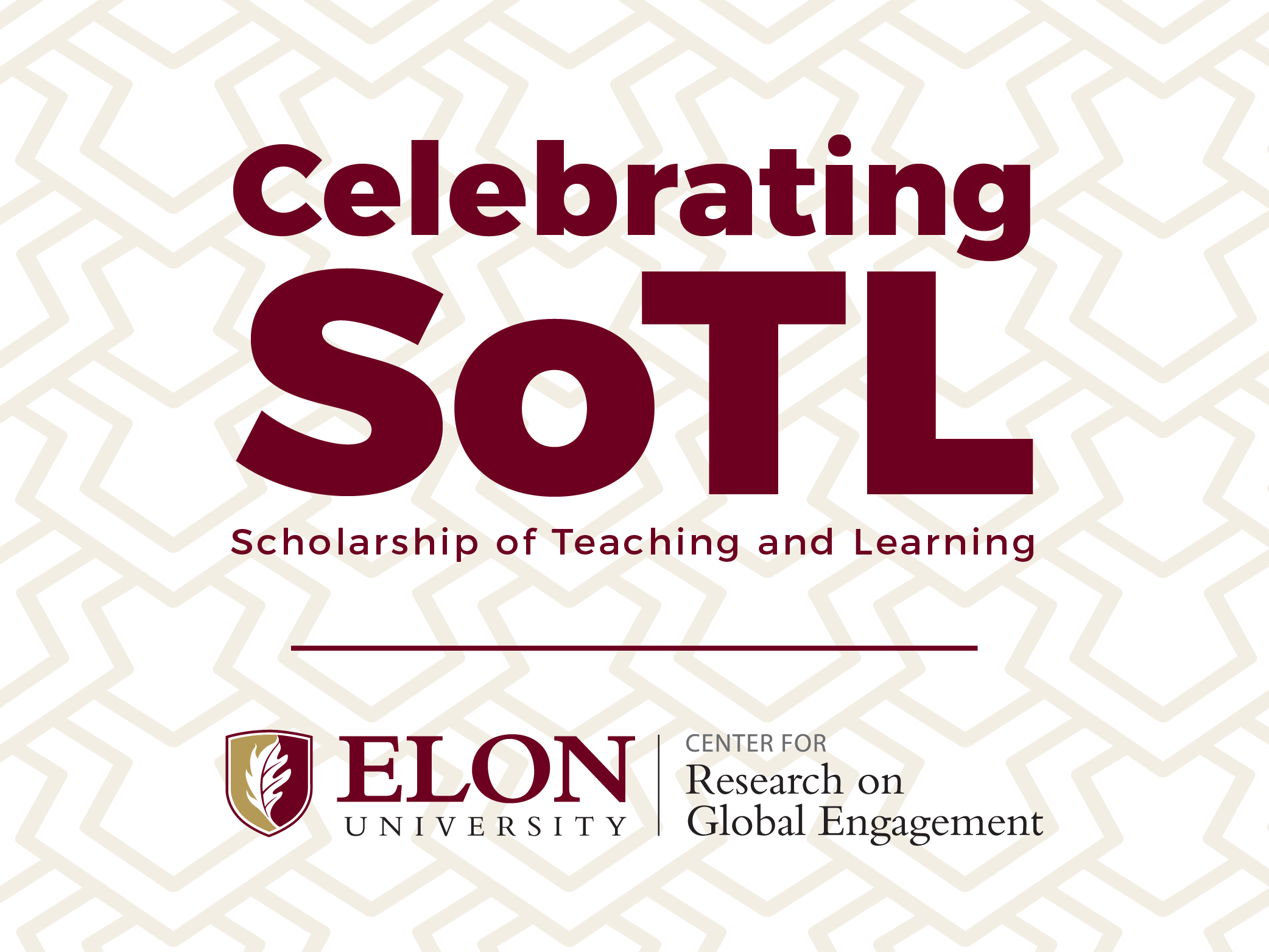Three Elon professors are investigating how students can discover a sense of global interconnectedness in their own community.
Each spring, the Center for Engaged Learning (CEL), the Center for the Advancement of Teaching and Learning (CATL), and the Center for Research on Global Engagement (CRGE) join together to showcase research projects focused on the Scholarship of Teaching and Learning (SoTL). Due to COVID-19, we have shifted from our usual poster presentation session to an online version through a series of Today at Elon stories. Follow along each day as we share Elon scholars’ research on innovative teaching practices.
The chance to study abroad has long been a hallmark of an Elon education, and nearly 85 percent of students participate in an international or domestic study-away experience. These programs help prepare students to be effective in a complex and interconnected world.

But three Elon faculty members — Sandy Marshall, Vanessa Drew-Branch and Danielle Lake — are exploring how students might experience similar types of engaged, global learning without the need to travel. Global travel is expensive, increasingly environmentally unsustainable, and at times logistically challenging (for example, during a global pandemic). These faculty members are asking: How can students discover that sense of global interconnectedness in their own community? How can local engagement also be global?
“There’s a lot of diversity here in our own communities and work to be done here,” Lake says.
Marshall, Drew-Branch and Lake are teaching courses in Human Service Studies and Geography and are partnering with local organizations to engage students in place-based storytelling projects. Students have worked with two community partners, the African-American Cultural Arts and History Center and the Mayco Bigelow North Park Community Center, to capture oral histories both of individuals in the community and of the organizations themselves. Students then work with community storytellers and partner organizations to transform the oral history interviews into short digital stories about people and places in the community.

“By working with community storytellers to co-produce these digital stories, students are not merely learning about local history, but are entering into a relationship with the local community and helping to create space for these narratives,” Marshall says.
In partnership with Shineece Sellars and Bobbi Ruffin, faculty have created the Power and Place Collaborative, a new initiative designed to support collaborative and sustainable projects. They hope that the collaborative will enable more members of the on-campus and surrounding community to work together across courses and departments so that projects can have long-term continuity.
Students are gaining valuable skills through these experiences, and the faculty members see these courses as a way to ensure that students are giving back to the community. “Through these partnerships, we receive a lot of practice and interactions that build our students’ skills, but I wanted the relationships to be more reciprocal,” Drew-Branch says.

She recalls that when she first arrived at Elon, her students talked about the “Elon bubble,” a barrier they felt existed between Alamance County and the campus community. She wanted to bridge this gap, maintaining academic focus but also making sure students are giving as much to the broader community as they are receiving.
To assess the impact of these experiences, the researchers are using the Global Engagement Survey to measure students’ attitudes and perceptions of the value of these courses. They will then be able to compare their students’ outcomes to other global engagement programs and assess how these local experiences compare to global engagement gained through study abroad. They are also aiming to make the study longitudinal by checking back in with students in subsequent years.
Many studies like these only capture students’ attitudes and competencies right at the end of the experience, in the moment. But often it’s only with time that students can really appreciate and articulate the impact of an experience like this. They will have a clearer idea of whether the skills they gained were useful in their professional and civic lives and have a better understanding of how the course changed their global mindset.
Marshall, Drew-Branch and Lake appreciate how this SoTL project is allowing them to validate the educational impact of local engagement as intercultural learning. There has long been a lot of emphasis on travel as the best way to facilitate intercultural learning. Making this topic the subject of research gives them the chance to collaborate, to work together to measure and assess how students can grow as global citizens here at home.
““I see SoTL as a way of aligning your teaching, research and service,” Lake says. “It can improve the quality of your teaching — as you’re engaged in designing these courses that you want to know are valuable to students. It can also be a form of service as we learn from the research we’re doing and can share it out with others.”
Drew-Branch likens her work to a quilt, with teaching, research (including SoTL), and service being “all different quilt squares, which when we stitch them together make one beautiful fabric.”
This project is supported by a faculty research grant from Elon’s Center for Research on Global Engagement (CRGE). Each year, these grants support high-quality research designed to strengthen Elon’s commitment to diversity and global engagement. Learn more about CRGE’s funding opportunities.



